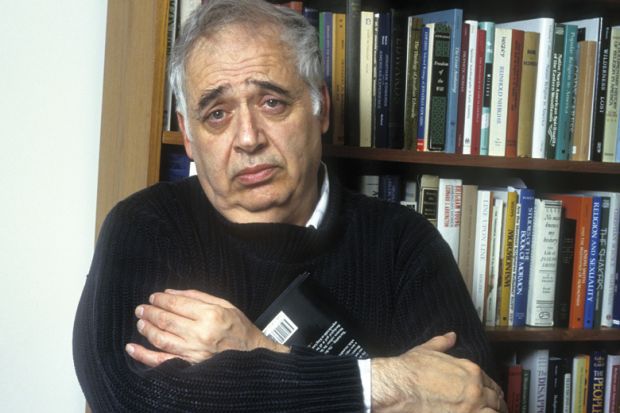Once upon a time, there was something called theory. It migrated across the Channel from France into Britain, but also seemed to have a second point of origin in New Haven, Connecticut. Seen from the American side of the Atlantic, the “Yale School” of deconstruction is the subject of Marc Redfield’s gripping and intricately woven study: part cultural and institutional history, part exegesis and critique of key writers’ work – and part reflection on the impossibility of smoothly bringing together those two frames of analysis.
He is fascinated by the way in which a particular kind of literary criticism somehow became what he calls a minor media myth. Mass-market magazines ran occasional features about a phenomenon that they presented as threatening the integrity of the (perennially threatened) academic humanities. When the Nazi-sympathising wartime journalism of prime Yale critic Paul de Man came to light in the late 1980s, theory – or deconstruction – could appear as a natural development of, or else a covert apology for, an ineffaceable and original tendency.
Redfield is less interested in this standout sensation, much documented already, than he is in the peculiar history whereby a specialist form of academic writing acquired a certain public prominence in the 1970s and 1980s. He highlights the complex connection between, on the one hand, the media fascination with human (or inhuman) personalities – the “larger than life” Harold Bloom and the coldly “cerebral” de Man – and, on the other, de Man’s sustained analysis of the error, but also the inevitability, of authorial personification.
The book has separate chapters on the writings of four of the major figures who were part of that nebulous (and stellar) Yale school: Bloom, de Man, Geoffrey Hartman and J. Hillis Miller. This list repeats a common sidelining of female theorists, notably Shoshana Felman and Barbara Johnson, who were also significant. Redfield awkwardly, though not unreasonably, explains this mainly in relation to his tracking of a public legend in which the men’s names were the ones that figured. For despite its title, this isn’t a book about theory “at” Yale in the sense of what happened in that place or that institution day to day or year by year; instead, it’s about “Yale theory” as seen from academic and media vantage points. This is the rationale for dissecting both the (media) picture and the (scholarly) texts – but not trying to reconstruct a picture of Yale itself in the heyday of this intellectual movement.
Jacques Derrida, who came to symbolise the Paris-Yale connection because of his visiting appointment at Yale, is not given a separate chapter, but he features strongly in Redfield’s fascinating readings of 1990s paintings by Mark Tansey that take theory as their subject. One of these, Derrida Queries de Man, actually portrays an ambiguous duel between these two colleagues, both of them identified with deconstruction. Among the four critical oeuvres that Redfield describes, you have the impression that his own critical heart is with Hartman; but it is the bromantic tussle between Derrida and de Man that draws his most forceful response.
And not only in viewing the allegorical adventures of this particular couple. The de Man chapter is primarily an engagement with John Guillory’s critique in Cultural Capital: The Problem of Literary Canon Formation, as Redfield weighs in, point by point, to take out Guillory taking out de Man. In a proto-Bloomian way, something strenuously agonistic seems to take precedence, apart from the academy and the occasional theory match reports in the media. But like the rest of the book, this is an accomplished and riveting exhibition of critical skill and insight.
Rachel Bowlby is professor of comparative literature and English, University College London.
Theory at Yale: The Strange Case of Deconstruction in America
By Marc Redfield
Fordham University Press, 272pp, £68.00 and £20.99
ISBN 9780823268665 and 8672
Published 2 November 2015
POSTSCRIPT:
Print headline: Nothing but text on the mind
Register to continue
Why register?
- Registration is free and only takes a moment
- Once registered, you can read 3 articles a month
- Sign up for our newsletter
Subscribe
Or subscribe for unlimited access to:
- Unlimited access to news, views, insights & reviews
- Digital editions
- Digital access to THE’s university and college rankings analysis
Already registered or a current subscriber?




